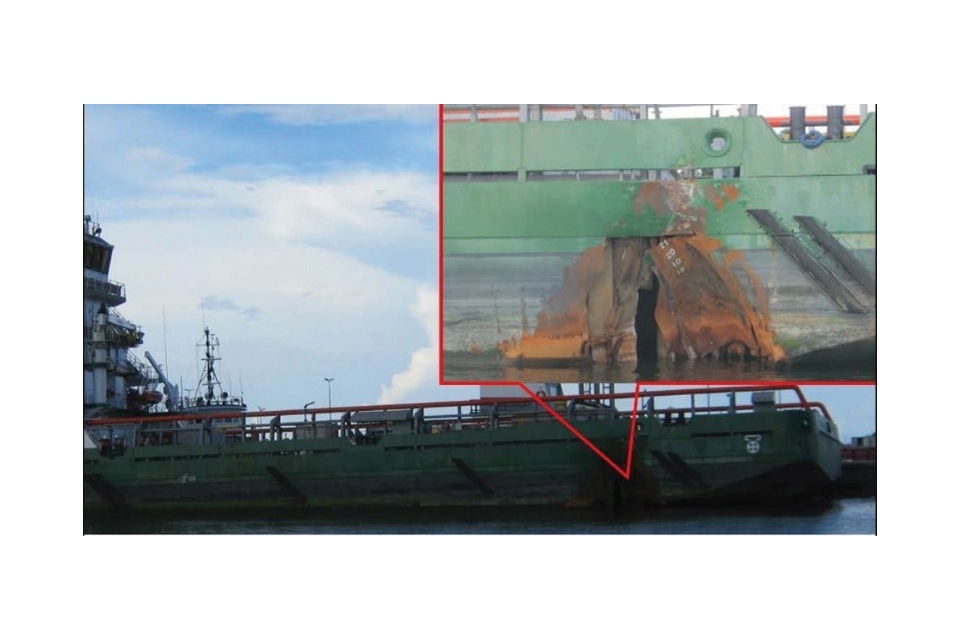Not following company procedures stipulating two persons on the bridge at all times and mobile phone use have resulted in a costly collision between a bulk carrier and an offshore supply vessel. The Nautical Insitute discusses the incident in its latest Mars Report.
The Nautical Institute gathers reports of maritime accidents and near-misses. It then publishes these so-called Mars Reports (anonymously) to prevent other accidents from happening. A summary of this incident:
A bulk carrier in ballast was underway in daylight conditions and good visibility. Near noon, there was a handover of the watch. The helm was on autopilot and the vessel’s speed was 14.8 knots. Since it was daylight and good visibility, the officer of the watch (OOW) was alone on the bridge while the helmsman/lookout was occupied with other ship duties on deck.
Meanwhile, on the bridge of an offshore supply vessel (OSV) about 8 nm away, the OOW was also alone. Although ostensibly navigating, he was also occupied with various personal calls and text messages on his mobile phone.
According to the Voyage Data Recorders (VDRs) of both vessels, each vessel was present on the other’s ARPA display, both as a radar and AIS target. Neither radar had any automatic target tracking or alarm features enabled, and neither vessel was acquired by either OOW. The vessels were in a crossing situation with a CPA of zero.
Also read: Allianz: ‘Fire, collision, sinking and damaged cargo top causes of marine insurance losses’
Eventually, the OOW on the OSV became aware of the risk of collision. He disengaged the autopilot, increased the throttles and turned to port to minimise the damage to the vessel as a collision was now inevitable.
The bulbous bow of the bulk carrier, which was traveling at about 14 knots, struck the port side of the OSV, which was traveling at 9 knots, and breached the hull. The impact caused the OSV to heel to starboard, and water rushed over the main deck from the starboard side.
At the time of the collision, the bulk carrier was still in autopilot mode, and there was no recorded change of engine telegraph (which was still at full ahead) or rudder order. About eighteen seconds after impact, the OOW engaged manual steering and turned the rudder hard to port. About thirty seconds after impact, the master of the bulk carrier arrived on the bridge.
The general alarm was sounded on the OSV, and all crew were instructed to go to their muster stations. As a consequence of the collision, the port side propulsion room started to flood, and the OSV began to list to port and trim by the stern. The ship’s ballast pump was used to dewater the space and to get the breach to the hull out of the water as far as possible. Although the OSV lost propulsion, the electrical generators in the engine room remained operational and provided power to the ship.
Damage to both vessels was estimated at USD 12.3 million.

Investigation findings
The official investigation found that the probable cause of the collision between the bulk carrier and the OSV was distraction of the bulk carrier’s OOW due to performing non-navigational tasks and distraction of the OOW on the OSV due to cell phone use, which kept both officers from keeping a proper lookout. Contributing to the casualty was the OOW on the OSV not following his company’s watchkeeping policies, which called for two persons on the bridge at all times.
Also read: Ships collide in daylight and good visibility
Advice from The Nautical Institute
- Nonoperational use of cell phones and other wireless electronic devices by on-duty crew members in safety-critical positions has been a factor in casualties and accidents in all transportation modes. Using cell phones and other personal electronic devices has been demonstrated to be visually, manually, and cognitively distracting.
- Nonoperational use of cell phones should never interfere with the primary task of a watchstander or a bridge team member to maintain a proper lookout. It is important for personnel to follow established protocols regarding cell phone use.
Also read: Scot Carrier and Karin Høj had no lookouts during fatal collision
Mars Reports
This accident was covered in the Mars Reports, originally published as Mars 202344, that are part of Report Number 371. A selection of the Mars Reports are also published in the SWZ|Maritime magazine. The Nautical Institute compiles these reports to help prevent maritime accidents. That is why they are also published (in full) on SWZ|Maritime’s website.
More reports are needed to keep the scheme interesting and informative. All reports are read only by the Mars coordinator and are treated in the strictest confidence. To submit a report, please use the Mars report form.








